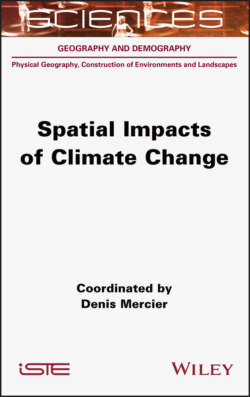Читать книгу Spatial Impacts of Climate Change - Denis Mercier - Страница 19
1.5.4. Albedo and the radiation balance
ОглавлениеFigure 1.12. Elements of the global energy balance and albedo of different surfaces in the Arctic
(source: design D. Mercier, drawing by F. Bonnaud, Faculty of Arts, Sorbonne University, 2020). For a color version of this figure, see www.iste.co.uk/mercier/climate.zip
Although albedo occurs everywhere on the planet's surface, its role in today's global warming is best illustrated in the Arctic basin. The ocean (sea ice) and land (glaciers, snow) surfaces of the Arctic cryosphere have a high albedo potential (see Figure 1.12). Increases in air and ocean temperatures are contributing to a decrease in the spatial extent of the cryosphere (see Chapter 2).
Thus, while changes in sea ice and snow cover can be considered as impacts of climate change, the role of these changes in the albedo-temperature feedback also makes them agents of change, through a positive feedback loop (see Figure 1.13). As temperature increases, surfaces with low albedo powers (ice-free ocean and land surface devoid of glaciers and snow) increase and absorb more solar radiation and become warmer.
Figure 1.13. Positive feedback loops explaining the amplification of Arctic climate warming
(source: design D. Mercier, drawing by F. Bonnaud, Faculty of Arts, Sorbonne University, 2020). For a color version of this figure, see www.iste.co.uk/mercier/climate.zip
In addition to albedo, Figure 1.12 illustrates the major components of the Earth's radiation budget, which is simplified by an average solar energy input of 342 watts per square meter to the Earth's surface. The percentages of each component (clouds, ocean, land surface, atmosphere) show that only 47% is absorbed (25% by the oceans and 22% by land surfaces). In the evolution of temperature in the lower layers of the atmosphere, the cloud component plays a fundamental role because it absorbs part of the energy (19%) and reflects 20%. Cloud cover and its temporal evolution therefore appear to be an essential element in understanding the evolution of the radiation balance on the Earth's surface.
